On December 14, many Google AdWords Grant Advertisers received an email from the Google Ad Grants team notifying them that the $2 maximum CPC limitation has been lifted, effective immediately, to those that are using “Maximize Conversions” automated bidding.
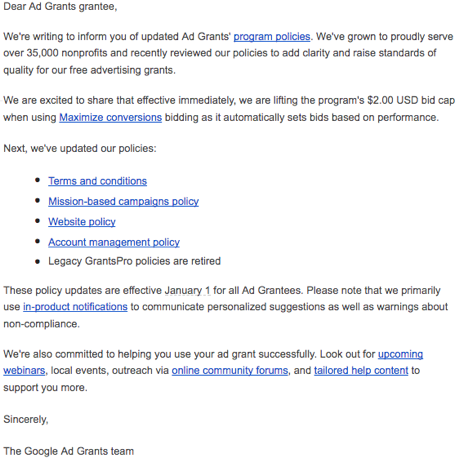
First instinct was immediate joy and high-fives around the office.
If you were not aware, nonprofits that use Google Grants receive up to $10,000 a month in “free” money to advertise on Google search.
However, the maximum $2 CPC limit made it difficult for advertisers to compete with non-grant advertisers and spend the full budget.
In addition, nonprofits that were using their Google grant cannot use it for Google Search Partners or Google Display network which makes it even more difficult to spend the full budget.
BUT, with this change of removing the $2.00 max CPC bid cap, grant advertisers could now be more competitive and spend their full budget. Sounds too good to be true…and it is.
What Exactly Has Changed?
After reading the updated program policies, you will see there were significant changes that in some cases could suspend a Grants account altogether.
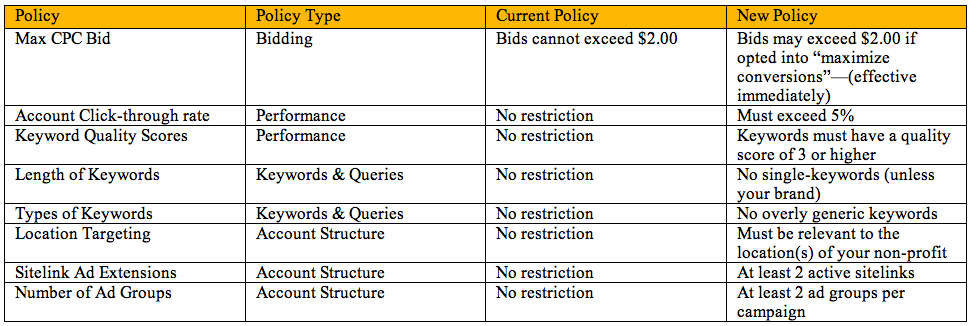
Why Google Made These Changes to Grants Accounts
First and foremost, Google is trying to ensure the ads that appear to their users are relevant.
They also might be trying to weed out nonprofits, especially those accounts that are not actively managed by paid search professionals (may be a bit of a conspiracy theory here).
What might be most frustrating about the new restrictions is that the exact issues Google is now trying to correct were somewhat caused by Google and their original limitations they put in place.
Google made it very difficult to spend the $10,000 they gave nonprofits with the $2.00 Max CPC bid limit, so grant advertisers were motivated to figure out ways how to spend the full budget which included:
- Expanding location targeting (even if not entirely relevant to their nonprofit).
- Bidding on general keywords (in some cases, overly generic or not so relevant keywords).
Leveraging these tactics to spend more budget led to many of the performance restrictions they have recently put in place which started on January 1, including low click-through rates and low low-quality scores.
Again, the most important piece of information that Google Grant advertisers need to know is that come March 1, your account could be suspended if your account click-through rate is not above 5 percent.
Please note, after talking with a Google Grant team member, they will audit accounts starting March 1st and look to see if improvements have been made and then decide if an account suspension will occur.
Actionable Steps You Should Take
If you think your account is potentially facing suspension, here are three actionable steps you can take.
1. Check Your Account CTR
- Is your click-through rate above 5 percent? If not, which campaigns, ad groups, or keywords are bringing it down the most?
- Are these extremely important to your organization? If not, consider removing them. If they are important, try to improve the click-through rate.
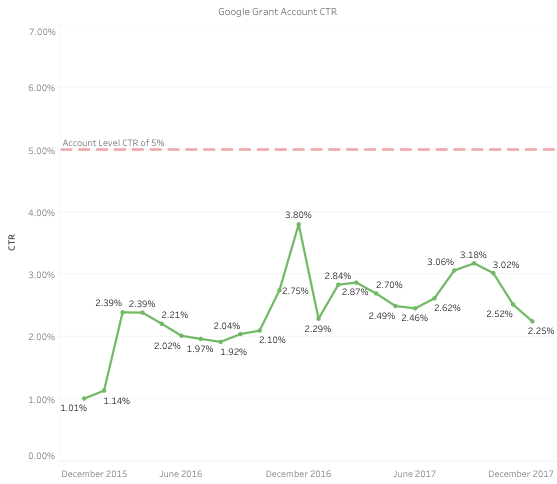
There are several ways to go about improving your CTR, including:
- Adding relevant ad extensions specific to both campaigns and ad groups.
- Rewriting ad copy to be more relevant to your keywords (and testing ad copy).
- Reviewing search queries to identify irrelevant keywords (and add them as negative keywords).
- Removing broad match keywords and change them to modified broad match.
- Running a filter to look at keywords with high impressions and a low CTR; focusing in on these keywords.
2. Find Keywords With a Quality Score of 1 or 2
Identify the importance of these keywords. If they aren’t that important, it makes sense to remove them.
Or, if you have more time, then try to improve the quality score by implementing the same tactics above mentioned to improve your CTR.
You might also try creating custom landing pages for keywords with low quality scores to try and improve them.
Another tactic you can use it to look at why your quality score is low. You can do this in two ways:
- If you hover over the status of the keyword, it will typically give you the main reasons as it relates to expected CTR, ad relevance, and landing page experience:
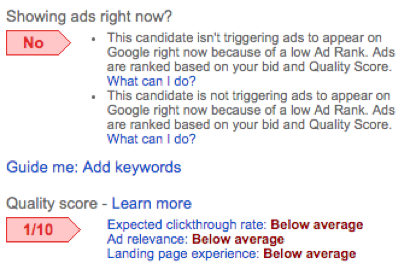
- Another option is to add quality score columns to your keywords and sort by quality score:
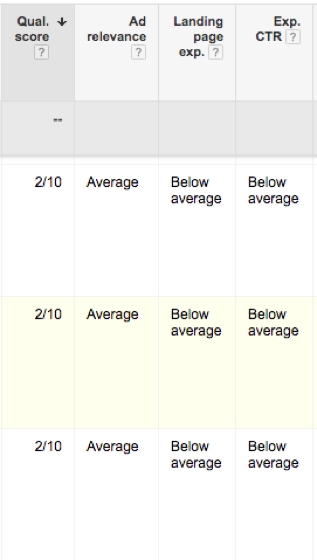
Either of these options can give you direction on where you should focus your time optimizing and improving the quality score of your keywords.
3. Check Your Ad Groups, Sitelinks & Location Targeting
Make sure you have at least two ad groups for each campaign and at least two sitelinks running.
Also, make sure your location targeting is relevant to your organization.
A Case Study: Improving Nonprofit Campaign Performance
After this announcement in December, we started working on a plan to improve the account click-through rate and overall account health of a nonprofit partner we work with that had previously been managing their grant account internally.
Like many other grant accounts we have seen, the account was built to spend as much of the budget as possible and not as focused on relevancy and performance like a normal (paid) AdWords account might be.
Upon taking over the grant account, our main focus was improving the click-through rate to exceed the 5 percent minimum.
This involved:
- Reviewing the actual search queries coming in for each campaign and restructuring them based on the relevant search queries that were already driving traffic.
- Adding negative keywords to each campaign based on the same search queries that were generating irrelevant traffic and impressions.
- Modifying the geotargeting to target locations that were within a one to two-hour drive of the nonprofit.
- Restructuring the keywords into ad groups leveraging modified broad and exact match.
- Focusing on writing relevant ad copy and leveraging all relevant ad extensions for each campaign.
- Opting into the “maximize conversions” bid strategy.
The results?
Not only is the account now hitting the 5 percent CTR goal for the month, over the last 7 days it’s closer to 9 percent.
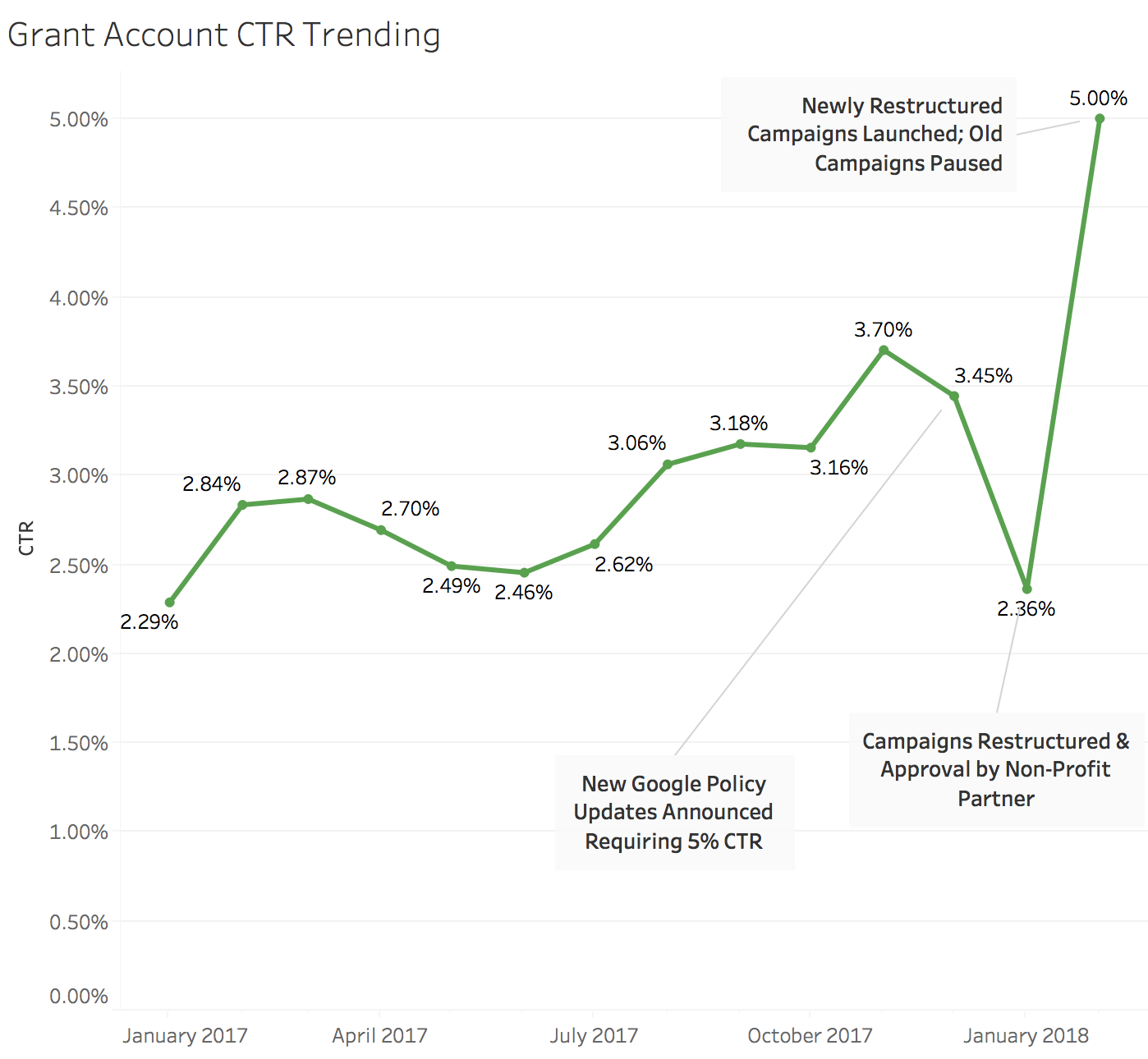
Finally, we have also seen improvements in quality scores month over month.
Now, these numbers do include a combination of new and old campaigns.
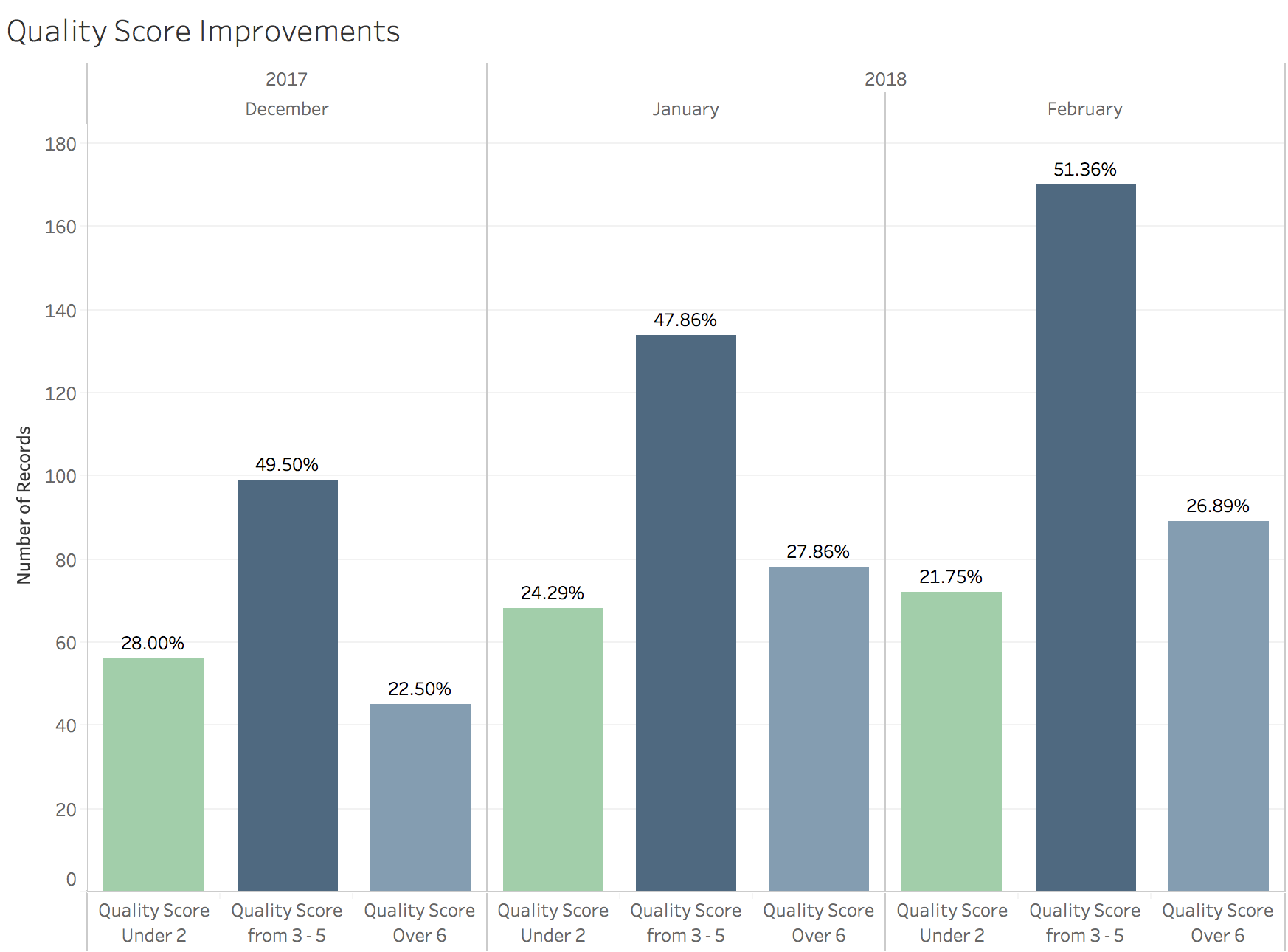
If we just isolate the new campaign quality scores only, the quality scores are even better!
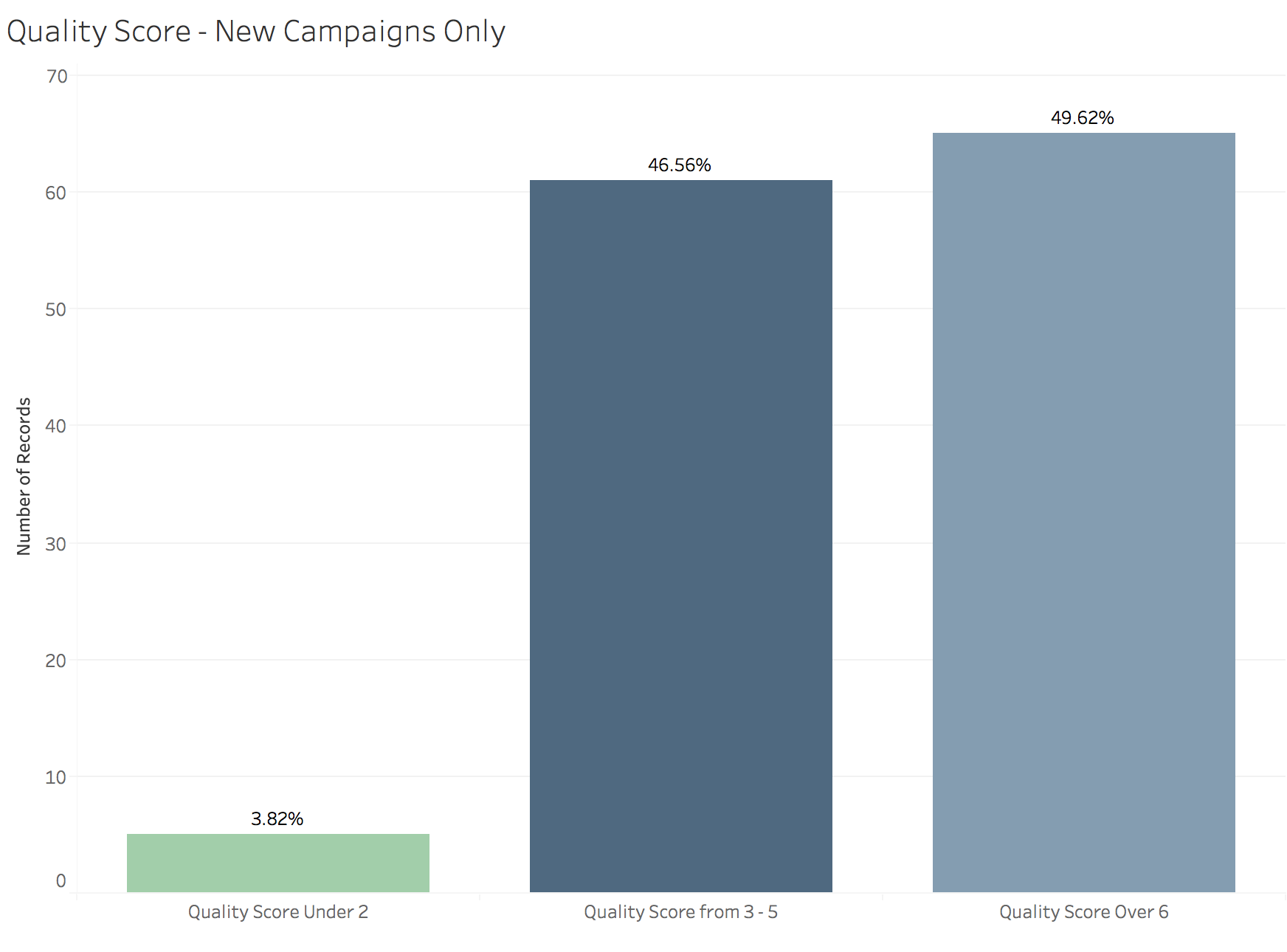
Finally, we’re driving higher quality website traffic with lower bounce rates and longer average visit durations.

Conclusion
It is amazing that Google AdWords provides up to $120,000 per year to nonprofits.
You should do everything you can to hold onto this benefit.
In order to get your Google Grant AdWords account to meet the requirements, you have to change your expectations.
Overall, the spend has dropped for the grant account I highlighted above; clicks are down as well. However; our location targeting went from national (in some cases) to state and even DMA only targeting.
Most importantly, we’re being matched with relevant traffic that can truly help our nonprofit increase donations and drive visitation (revenue).
Image Credits
All screenshots taken by Joe Castro, February 2018




